Honoring the Mighty Eighth
Story and photos
by Kathleen Walls
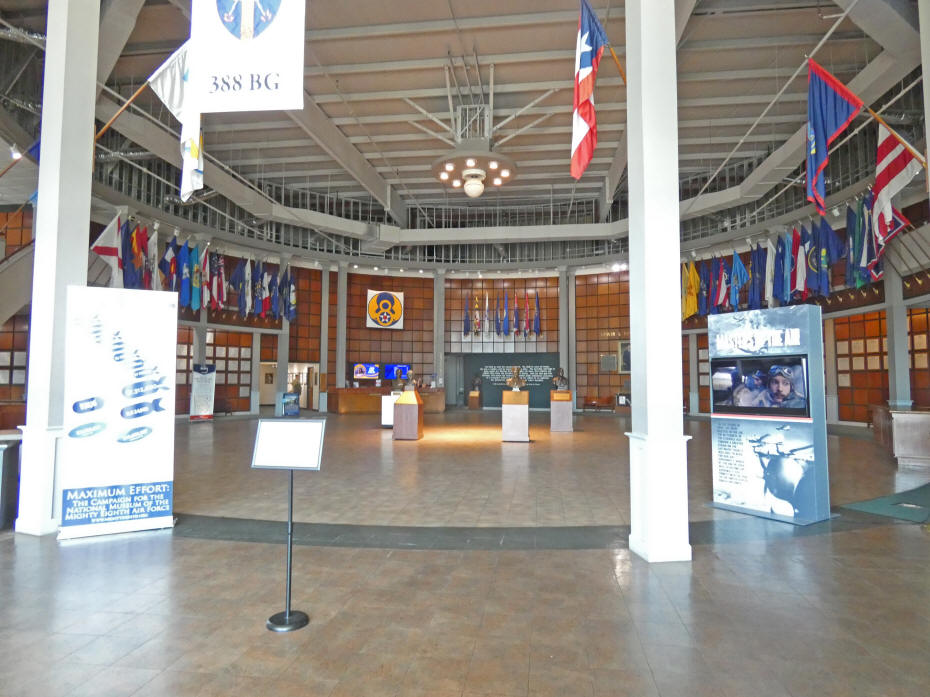
As Memorial Day approaches, I'm
thinking of the men and women who lost their lives in WWII.
I just visited the
National Museum of the Mighty Eighth Air Force in
Pooler Georgia
and witnessed the Flags for the Fallen event.
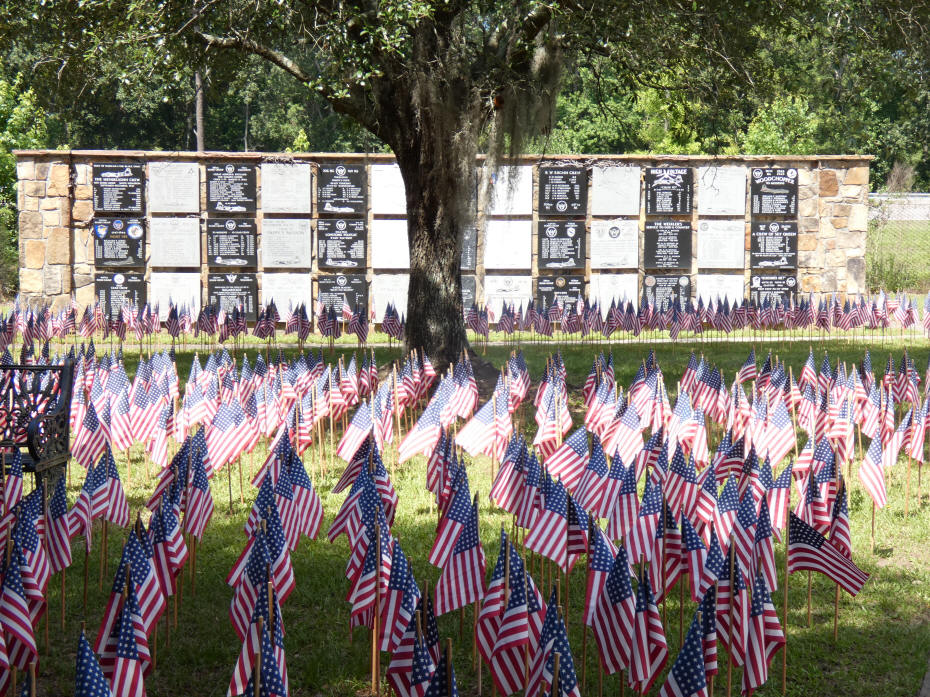
There is a fascinating story of valor
behind both the Flags Ceremony and the museum. The 8th Air Force
played a major part in the U.S. Army Air Force in Europe during
WWII. Its strategic bombing campaigns against Nazi Germany and
the occupied territories and weakening of Germany's war machine
helped to shorten the war. Of course, that came at a heavy
price. Casualties were more than 26,000. Another 28,000 airmen
became prisoners of war. The museum honors the entire eighth and
there is a flag on the grounds for each fallen hero.
%20Ken%20Beckman,%20Congressman%20Buddy%20Carter,%20CMSAF%20Eric%20Rideaux,%20and%20Elton%20Brooks.jpg)
Col. Sheldon Wilson, commander of
the 165th Airlift Wing, Georgia Air National Guard, Col. (Ret.)
Ken Beckman, Congressman Buddy Carter, CMSAF Eric Rideaux, and
Elton "Don" Brooks whose father was a WWII B-17 Tail Gunner,
honor flags at the ceremony of the Flags for the Fallen at the
National Museum of the Mighty 8th Air Force.
Over the course of the war, the Eighth Air
Force became the largest air armada in the world, capable of
sending more than 2,000 heavy bombers and over 1,000 fighter
planes on a single mission.
The museum is filled with exhibits that
tell the Mighty Eighth's story. The Prelude to World War II
exhibit tells the story of post-World War I Germany and how
Hitler rose to power.
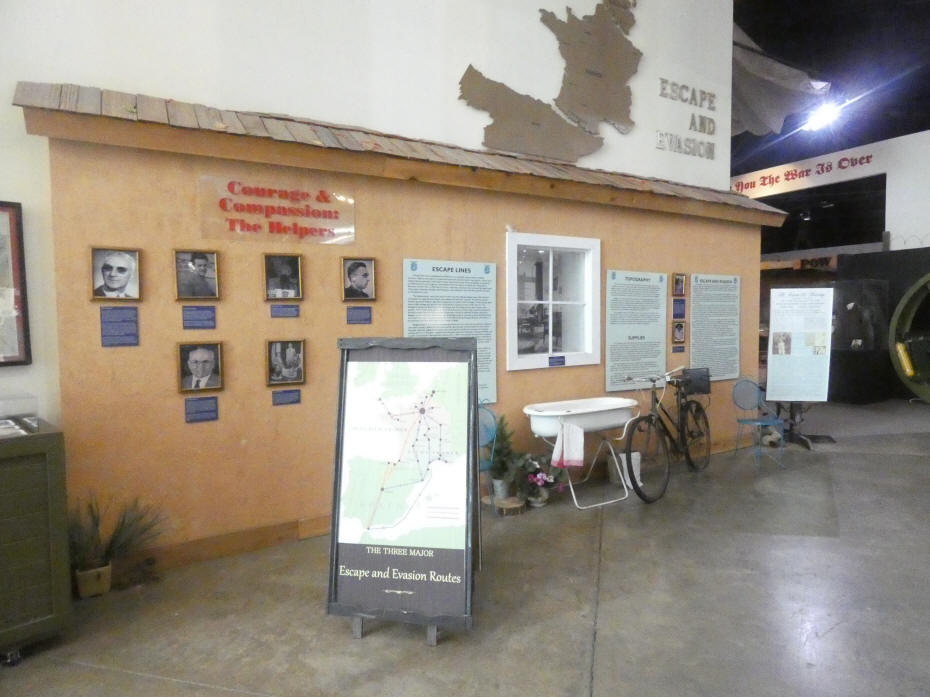
The Battle of Britain exhibit tells
of the British people's staunch fight to keep themselves and the
world out of Hitler's grasp until the Mighty Eighth came into
the picture. The Eights began in January 1942 just after the
December 7, 1941 bombing of Pearl Harbor by Japan, Germany's
ally. It began in Savannah, Georgia when the United States Army
Air Corps assigned seven men, without a single aircraft, to a
newly formed Eighth Air Force. During the war, the Eighth Air
Force grew to become the largest air armada in the world. It
could employ more than 2,000 heavy bombers and over 1,000
fighter planes on a single mission.
The Day of Infamy exhibit tells the
story of the Japanese surprise attack on Pearl Harbor with no
declaration of war. This forced the United States into World War
II. As soon as President Roosvelt declared war on Japan in his
famous speech stating, "Yesterday, December 7, 1941—a date which
will live in infamy—the United States of America was suddenly
and deliberately attacked by the naval and air forces of the
Empire of Japan." The Germans and the Italians declared war on
the United States on December 11, 1941.
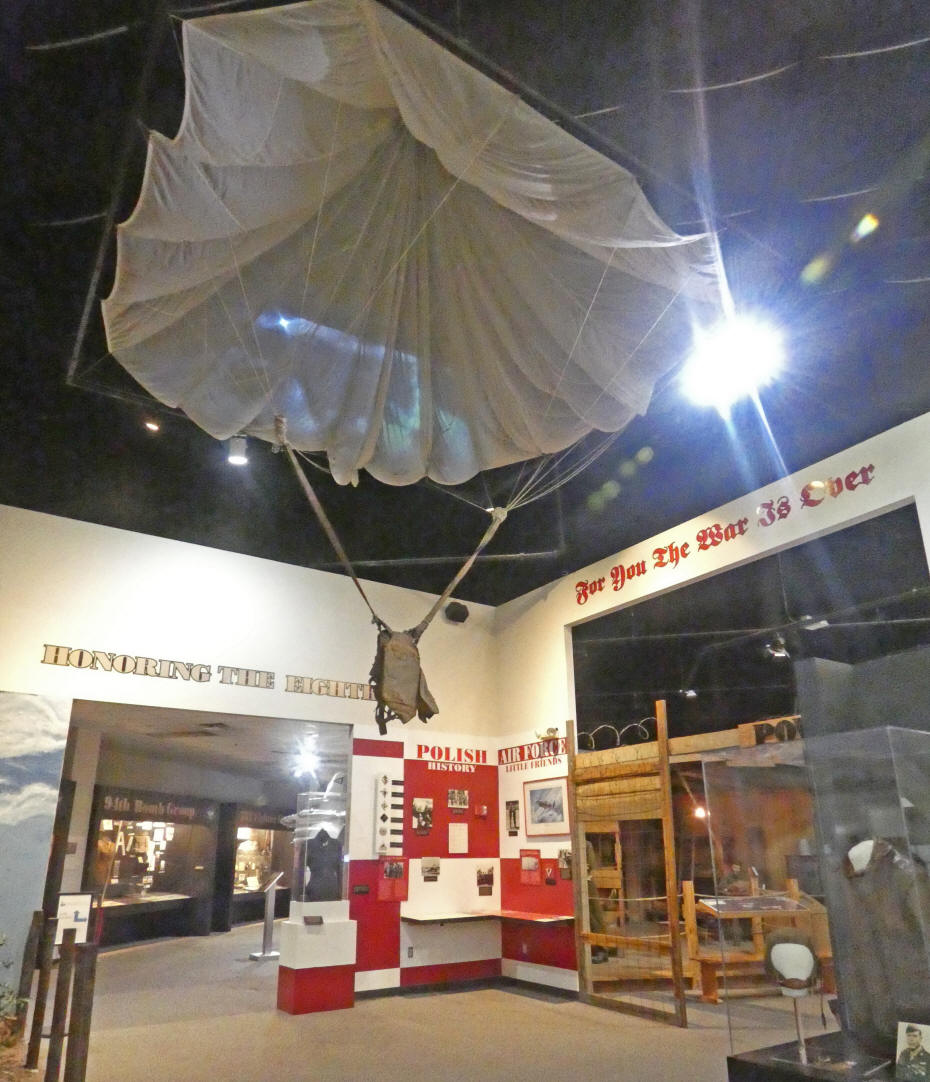
Airman Down exhibit begins under an
unfurled parachute, honoring the airmen who bailed out over
enemy territory. Although no longer fighting, they were still a
part of the war.
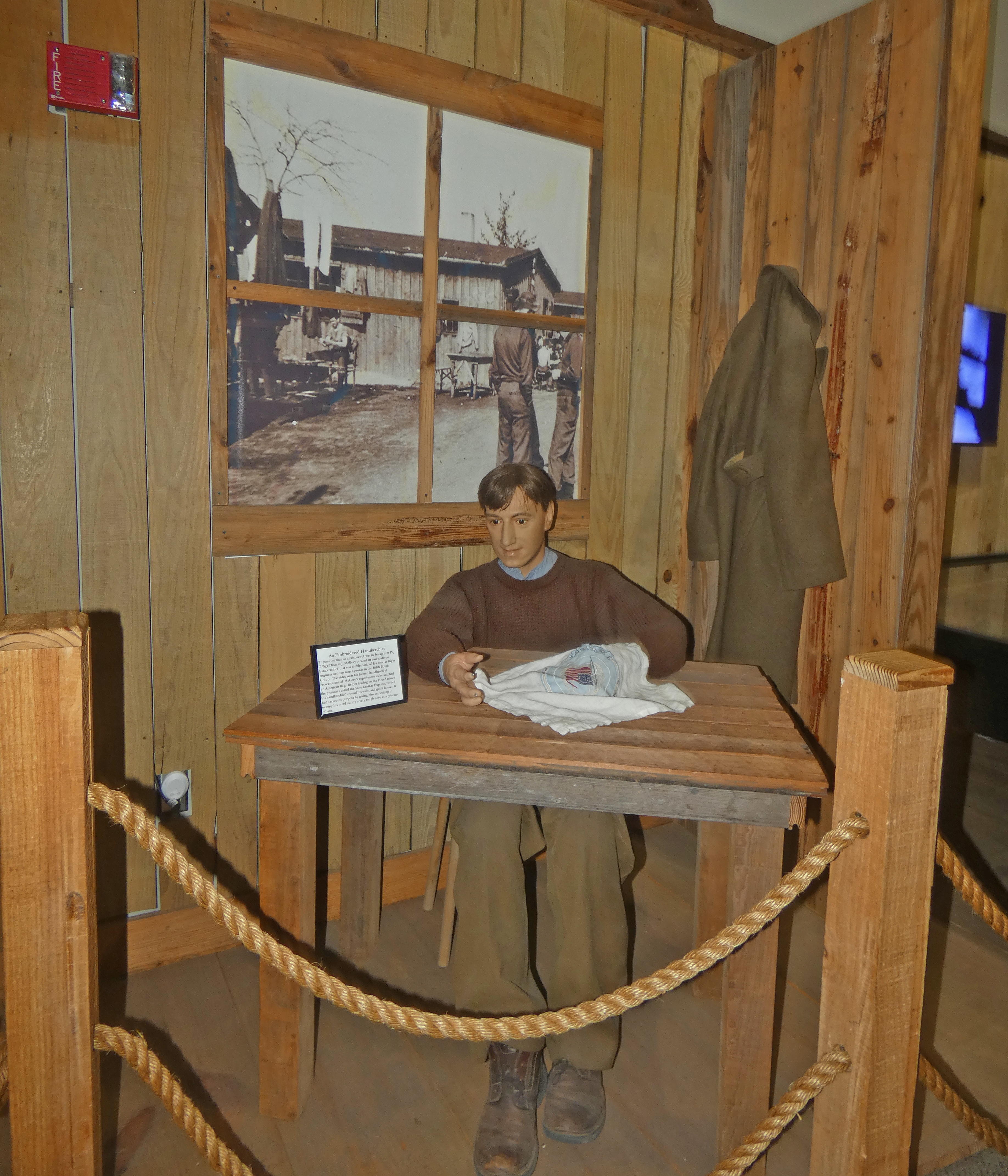
There's a recreated "safe house" and a POW
camp that houses artifacts donated by former POWS. One exhibit
shows Sargent Thomas J. McGory creating an embroidered
handkerchief to pass the time in the POW camp.

Women are not neglected here. The Fly
Girls of WWII exhibit showcases the WASPs, just over a
thousand women who ferried planes across the country, took part
in some dangerous flights, and showed their male counterparts
women knew a thing or two about flying.
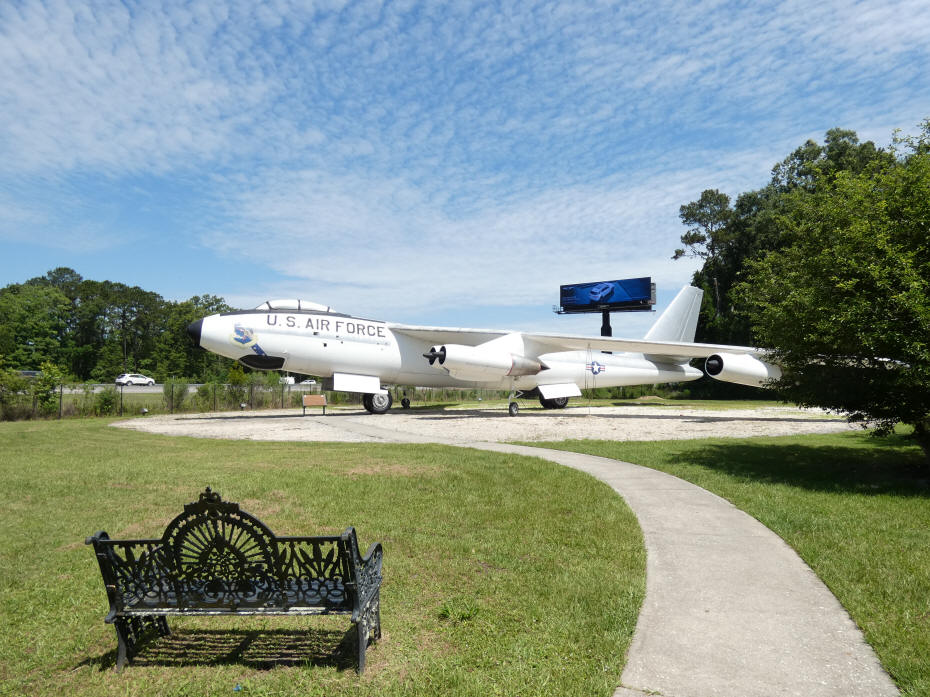
Behind the Museum in the Memorial
Gardens is a B-47 Stratojet, a key aircraft used by the
United States during the Cold War years that could fly at high
altitudes to avoid detection. This aircraft was pivotal as a
nuclear deterrent in the Cold War. The B-47 was America's first
swept-wing jet bomber and helped lead to the modern jet
airliner. This aircraft is on loan from the National Museum of
the United States Air Force.
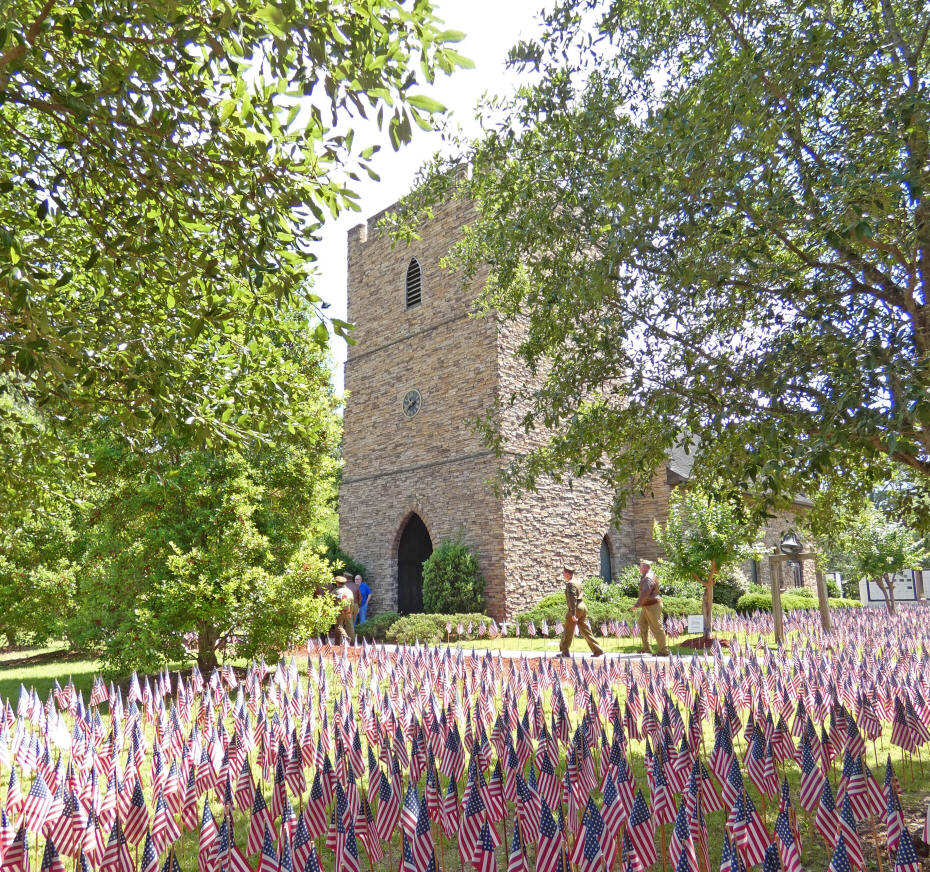
The most striking feature in the Memorial
Garden is the Chapel of the Fallen Eagles. This magnificent
gothic-style English chapel was built in 2002 in the style of
the sixteenth century. Chapel of the Fallen Eagles has an
east-west orientation, with the front door facing west and the
centerpiece window facing east.

The fourteen pews circa the late nineteenth
century came from Jones County, Pennsylvania. Many other chapel
features came from antique shops in Tennessee and Georgia. The
stained-glass windows, provided by Eighth Air Force veteran
groups or family members, and created by artist Jon Erickson at
Aurora Glass studios of Savannah, are stunning works of art.
Many young fighters fell in love with young
women from overseas and in the chapel there's an exhibit
dedicated to these war brides.
There is so much more in this museum, I
recommend everyone go visit and see in person the sacrifices
many young people made to keep American free. Let it be a
warning to today's generation to never let us fall prey to a new
Hitler.
Public
Disclosure Please Read FTC has a law
requiring web sites to let their readers know if any of the
stories are 'sponsored' or compensated. We also are to
let readers know if any of our links are ads. Most are not.
They are just a way to direct you to more information
about the article where the link is placed. We have several ads
on our pages. They are clearly marked as ads. I think
readers are smart enough to know an ad when they see one but to
obey the letter of the law, I am putting this statement here to
make sure everyone understands. American Roads and Global
Highways may contain affiliate links or ads. Further, as their
bios show, most of the feature writers are professional travel
writers. As such we are frequently invited on press trips, also
called fam trips. On these trips most of our lodging, dining,
admissions fees and often plane fare are covered by the city or
firm hosting the trip. It is an opportunity to visit places we
might not otherwise be able to visit. However, no one tells us
what to write about those places. All opinions are 100% those
of the author of that feature column.
| 


